Photo by Jenny Lee Photography
I have always been pretty raw and real on social media. I think it’s so important to share the good, the bad, and the ugly in order to tell the real story. Between the filters and the highlights, we often play the comparison game with ourselves and others – and we all know how that ends.
It’s no secret we didn’t sleep much the first 6 months of Nora’s life. I was forthcoming with it all and was often given great tips and tricks from other mama’s out there on Instagram. Thank y’all so much! I want to start off by saying this is our experience and our story. No two stories are alike, and everyone has to figure out what works for their family. We didn’t sleep train Nora by ourselves but instead brought in a professional sleep trainer who came highly recommended by my friend Ali Fedotowsky Manno. Kimberly with Sweet Dreams LA sleep trained Ali’s son Riley who was 4 months at the time and said Kimberly got Riley sleeping through the night within two nights. When she told me that, I was shocked, ecstatic and so hopeful for our family’s sleep!
Until Sweet Dreams LA came into our home, Nora’s sleep was always changing with each passing month. Just when we thought we were getting to a good place, we’d hit another milestone, leap, and/or development stage and BOOM. We were thrown off any “schedule” we thought we had, getting minimal sleep each night. It was affecting our lives to the extent where we were less productive, less energetic, and an all around exhausted family of three. I knew we had to do something, but I didn’t know what. I was constantly second-guessing every avenue we’d discuss from pacifiers to the cry-it-out method. The moment I spoke to Kimberly on the phone, I was put at ease and couldn’t wait for her to arrive in Arkansas. The funny thing is that we actually lived SO close to each other in the South Bay of Los Angeles last year! I’m so thankful she made her way to the south for a visit this summer.
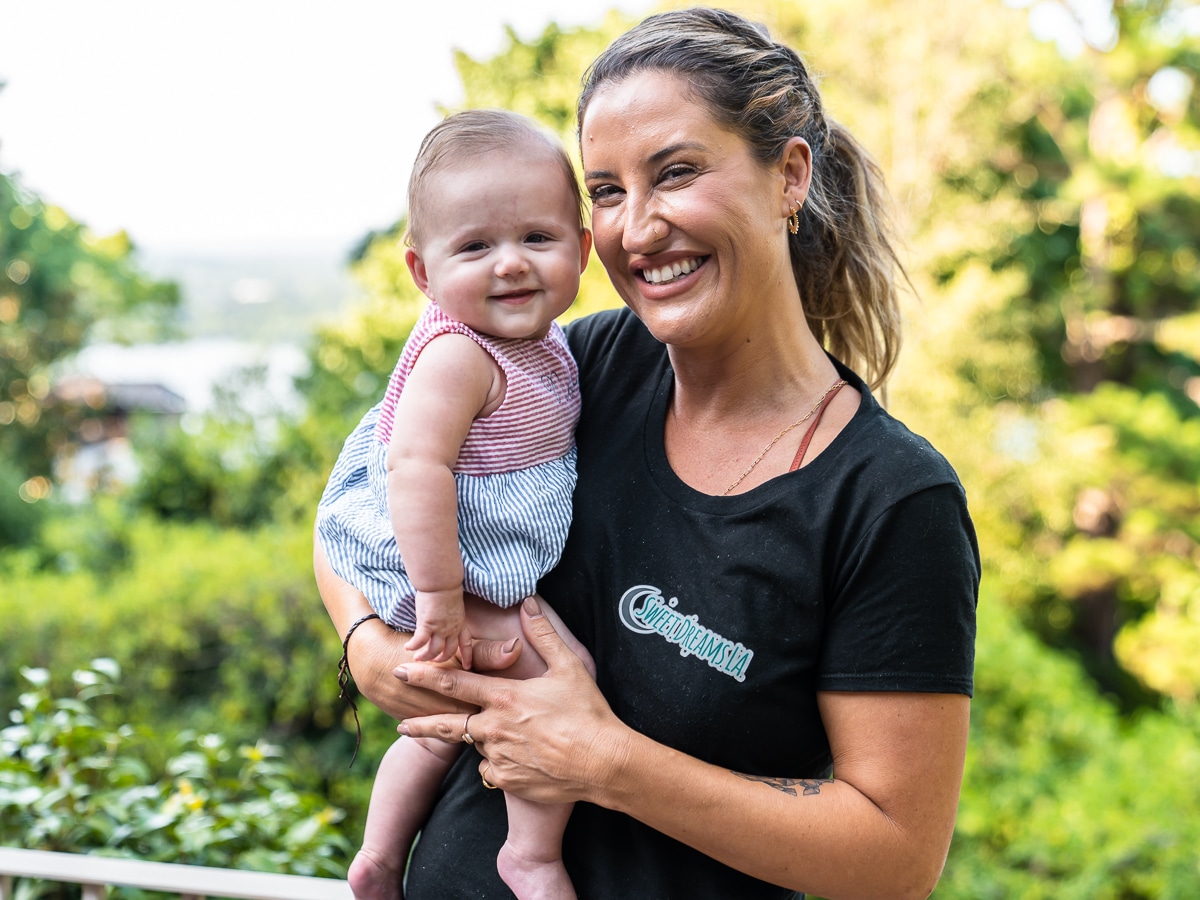
How It Works
Kimberly came to stay with us in Arkansas for 48 hours. We had two nights and two full days with her so that she could learn Nora’s cues, habits, and patterns. I know that doesn’t sound like a lot of time, but it really is! The first 24-48 hours are the hardest when sleep training, and after that, a lot of it is smooth sailing. Of course, I didn’t know any of this until we went through it, but I trusted her completely. I mean LOOK at how comfortable Nora is in her arms in the photo above! She is someone I would welcome into my home over and over again. As a postpartum doula, childcare specialist, and master sleep trainer, I could’ve talked her ears off for weeks and months to come. And the best part is that I actually can! We do catch-up calls, and I can text her whenever I have any questions at all after the fact. Her energy is infectious, and it’s obvious she knows her stuff. She is basically the sleep trainer to the stars and celebs all over the world – yes, she travels (and at no additional cost, just the airline ticket). Her clients can choose 2, 3, or 5 days of in-home support with her, something that I HIGHLY recommend over reading how-to guides. I’m the first to say do whatever works for you, but in my opinion, having someone like Kimberly in our home with us took out all the guesswork from our end. This is one of the first things we teach our babies to do on their own, and it’s okay to ask for help.
Why 6 months?
The short answer of why we started sleep training at 6 months: we were all exhausted and ready by then. We were becoming unproductive at work and our exercise was waning as was our mental health. To be honest, I started talking to Sweet Dreams LA when Nora was about 4 months. I dragged my feet for a long time because I don’t think I was necessarily ready…and that’s okay. I think waiting until the 6-month mark was perfect for us because Nora was a little older and we were READY. Hearing your baby cry is the hardest thing to deal with as a parent. It breaks me. That’s why it’s important to be at a place where you, as a parent, can emotionally and mentally handle hearing your child cry and not go in at every single peep! That’s what Alex and I did for so many months. At the sound of a whimper, we’d go in and pick her up. We never gave her a chance to figure anything out on her own. It was almost easier to go in and comfort her, feed her or allow her to sleep on my chest than hear her cry for various minutes at a time. I want her to be as comfortable and as happy as possible, and now I look at sleep training as giving her the tools she needs to know how to put herself to sleep and back to sleep. Babies need sleep in order to develop at the right pace and time, and I was definitely worried about this given that she wasn’t sleeping as much as she should have been.
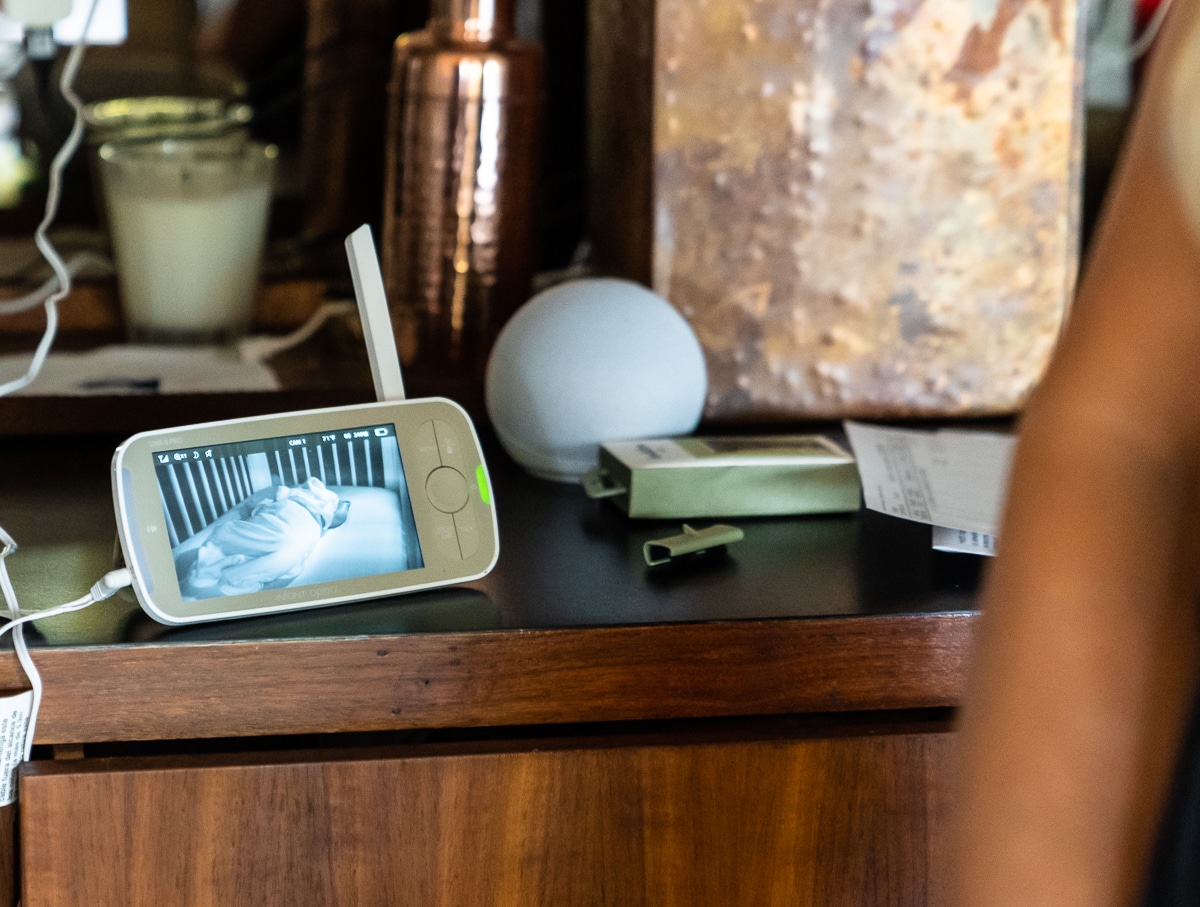
Bad habits
Allow me to introduce you to our laundry list of bad habits. This list worked against us in so many ways, and now I can see it all so clearly.
- Rocking Nora to sleep
- Putting her in her crib asleep
- Feeding Nora and allowing her to fall asleep, allowing her to associate a bottle with sleep
- Bringing Nora into bed for the last hour of sleep in the morning
- Going into Nora’s room at the sound of a peep
- Helping her back to sleep during naps
- Giving Nora bottles whenever she seemed unsettled or fussy
Nora needed to be given the tools to allow her to fall asleep on her own. Independent sleep is key, and babies need to familiarize themselves with their surroundings before falling asleep. Imagine if you fell asleep somewhere and woke up in a completely different place. You’d probably be unsettled, too! She also doesn’t need any sleep aids like a bottle. She is perfectly fine with her lovey and self-soothing mechanisms now! By feeding her and allowing her to fall asleep right there, we were basically teaching her that she needed to be fed (or simply held) in order to sleep. We hardly ever brought her into bed with us, but I know a lot of parents struggle with this, and I wanted to include it in this laundry list. Setting boundaries and keeping to them is important. Try these out and allow them space to figure it out. They are extremely smart human beings! After ridding of all of these habits, Nora now sleeps 12 hours a night! We are all different people, and for the better.
Sleepy
Baby
Daytime naps
A baby’s sleep cycle is anywhere from 30-45 minutes. Connecting those sleep cycles is in the practice and continues to be challenging for us during daytime naps. We are getting there slowly but surely. She’s got it down at night, but it’s going to take time and patience for her to unlearn the short nap habit and being helped back to sleep during the day, and instead, self-soothe through light sleep cycles. We were advised to make Nora’s room darker (thanks for nothing, Pottery Barn “blackout” curtains). We’re moving soon, so we did the quick fix of black trash bags and painter’s tape over her beautiful windows ha! Kimberly completely tailored this program specifically for Nora as she does all babies she works with, and she left us with a much better routine and timeline to work with for Nora. We now know the appropriate number of naps per day and how to adjust timelines if we’re off schedule or traveling.
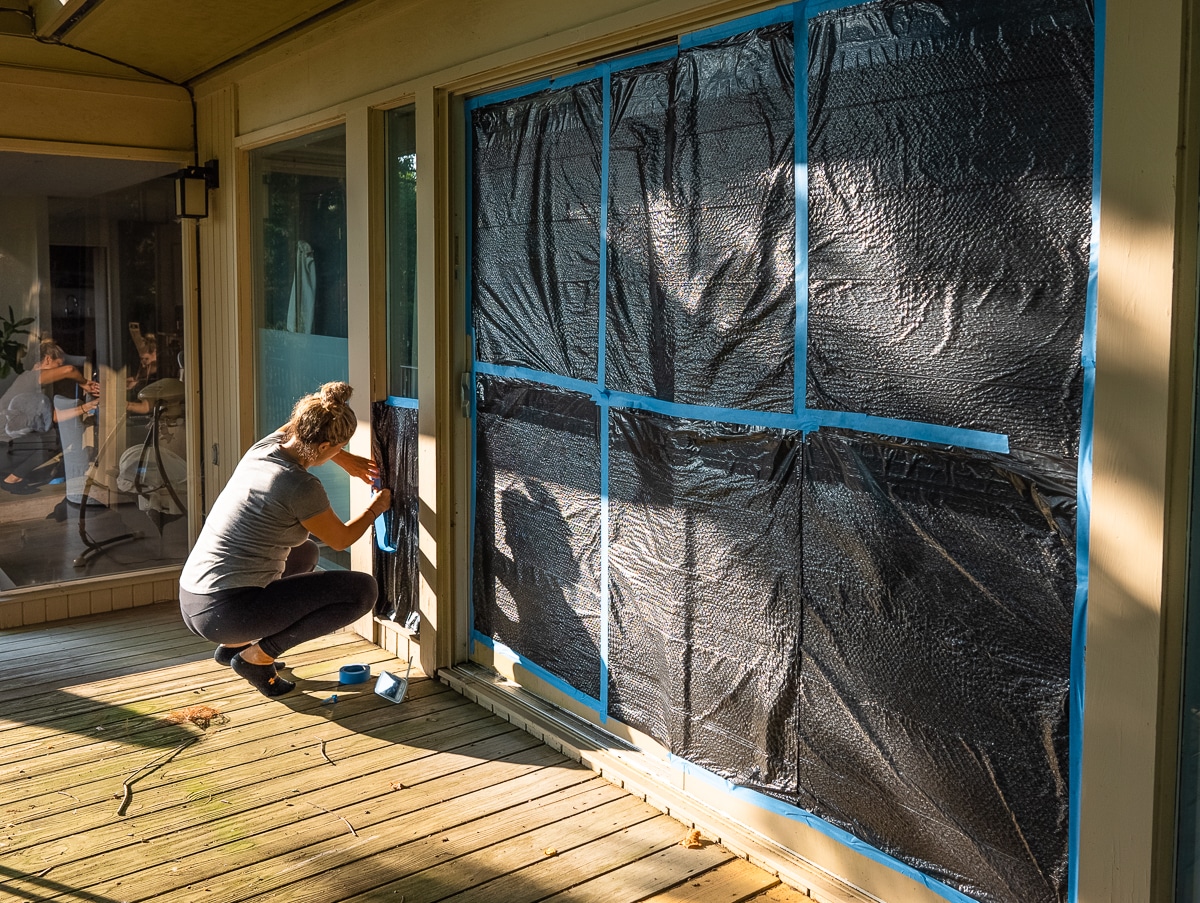
Travel and sleep
Travel days can be tricky and being away from home can obviously throw everyone off of a routine. The biggest thing here is to pay attention to awake times and sleepy cues. This is important to be aware of every day but especially when on the road because it probably won’t be the clockwork everyone is used to. Allow naps as you would if you were home (even though they may be in the stroller, carrier, your arms, etc) and know that you can always reset for the night or when you’re back at the hotel/Airbnb/home. If you change time zones, keep the time between the naps the same. It’s almost like you’re tricking them a bit, but they aren’t giving up any of their sleep. Rest assured that your baby will not be starting at square one if thrown off of a routine. They are so smart and can restart the next day!
We traveled to visit family in Mississippi last weekend, and we brought black trash bags and painter’s tape to cover the windows. Dark rooms help Nora to continue connecting sleep cycles. Travel sound machines are a must, too!
So…how do you do it?
Over time, the amount of crying that a baby is going to do in the first two days of sleep training is nothing compared to how much they would cry over a year with poor sleeping habits. – Kimberly
I will never forget when Kimberly said that to me, and it makes a lot of sense. She calls her method the ‘Figure It Out’ method because she is allowing space for the baby to learn and figure it all out! She observes every move the baby makes during those few days when she’s in a client’s home. She realizes any patterns or behaviors and knows when the baby is ready to go down at the appropriate time, thus minimizing tears.
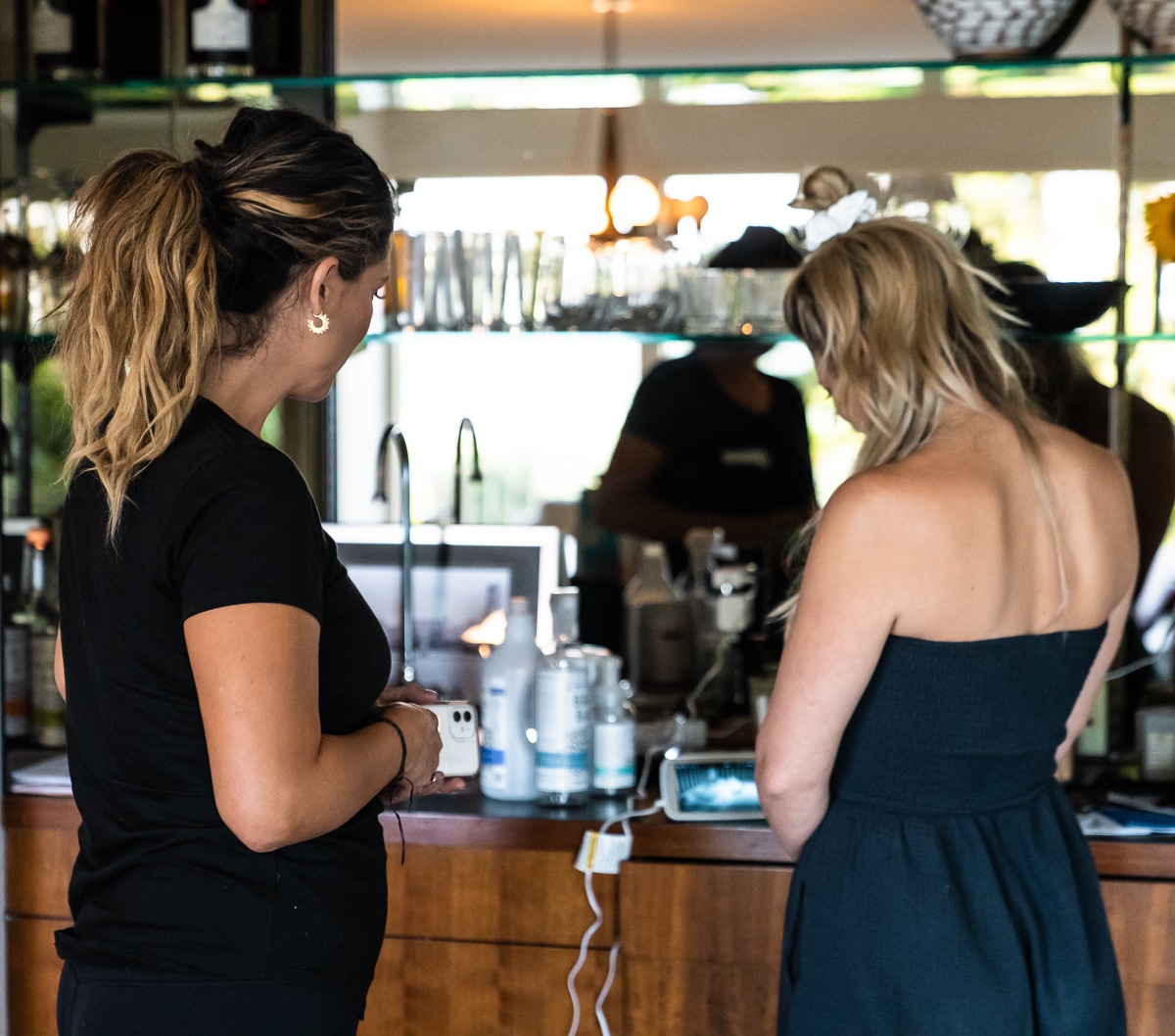
I’m sure you’ve been reading this and thinking, “Okay this is great, but tell us how to do it!” Kimberly tailors all programs to each specific baby which is why I would always suggest her for in-home support, but what I can say is this: It’s so important to recognize a baby’s sleepy cues, and I can’t stress that enough. If you put a baby down on a set schedule, then there will usually be more crying involved. We put Nora down according to her own cues, giving her body the opportunity to let us know when she’s ready. Right now, Nora’s average awake time between naps is two hours. Based on her sleepy cues (rubbing eyes, yawning, fussiness), I may put her down for a nap a bit earlier or a bit later than two hours. I give her a 6 oz bottle when she wakes up which allows her to eat when she’s actually hungry rather than trying to shove a bottle in her mouth at the sound of any peep or fussy episode like we were doing for so long. She was feeding 2x a night, but Kimberly (and pediatrician) told us that these are habitual wakings and that Nora didn’t need that amount of formula during the nighttime. (This depends on the baby, so check with your pediatrician.) We have dropped the 3am feeding, and as of right now, we are still offering a dream feed at 10pm. Nora is still asleep during this time (wild, right?!) and generally sleeps from 6:30pm to 7am now. We also realized that we were putting Nora down too late at night. She has gone from a 7:30pm bedtime to a 6:30pm bedtime which made all the difference! Many people believe that if you put a baby down later, they will sleep later in the morning. That’s simply not true and a recipe for an overtired baby! I wanted to give you our notes of how our first few nights went. Here they are below.
Night 1:
- Nora cried off and on for a while before falling asleep for good. Cried for 2 minutes, paused, sucked on her hand, grabbed her lovey, went quiet and fell asleep.
- Woke back up 15 minutes later to only do it all over again. Fell asleep for good 45 minutes after we put her down.
- Woke up twice in the middle of the night, off and on, for various minutes at a time. Alex and I slept, Kimberly observed all night. Nora had some long stretches of fussiness.
- *Important* to listen for the pauses the baby makes when crying. They are intentional and self-soothing pauses. When counting the minutes that your baby is crying, this is when you start the clock over since it’s not continuous crying.
Night 2:
Nora went down easily at 6:30pm. Woke up once at 3am (that habitual waking I just talked about!). Cried off and on with pauses. Asleep 30 minutes later.
Night 3:
Nora slept all the way through the night!
It’s been a couple of weeks since Kimberly left, and we still haven’t entered Nora’s room at night. She hasn’t given us a reason to do so, but of course I will be using my mom radar and parent intuition if I feel that something is wrong. Lastly, it’s so important to stay committed here. If you don’t stick to the plan, you’re ultimately confusing your baby. This would do more harm than good. I know it’s so tough, but there’s amazing sleep for your little one on the other side! Here’s the schedule of our nighttime routine which we always stick to no matter if we’re home or away.
- Undress for bath time
- Play in her 3-stage bathtub and unwind for 15 minutes
- Put on a diaper and get dressed in her sleep suit
- Put on her sleep sack (do this on the changing table – the crib is only for sleep)
- Notice if she’s super sleepy or needs a few more minutes. If that’s the case, we’ll read a book.
- Turn on white noise machine and sing a song (always You Are My Sunshine 🙂 )
- Put Nora in her crib with her lovey
- Lights completely out and close the door
- Make sure thermostat is at 70 degrees (we usually like it anywhere between 68 – 72)
Sleepy
Baby
Final Thoughts
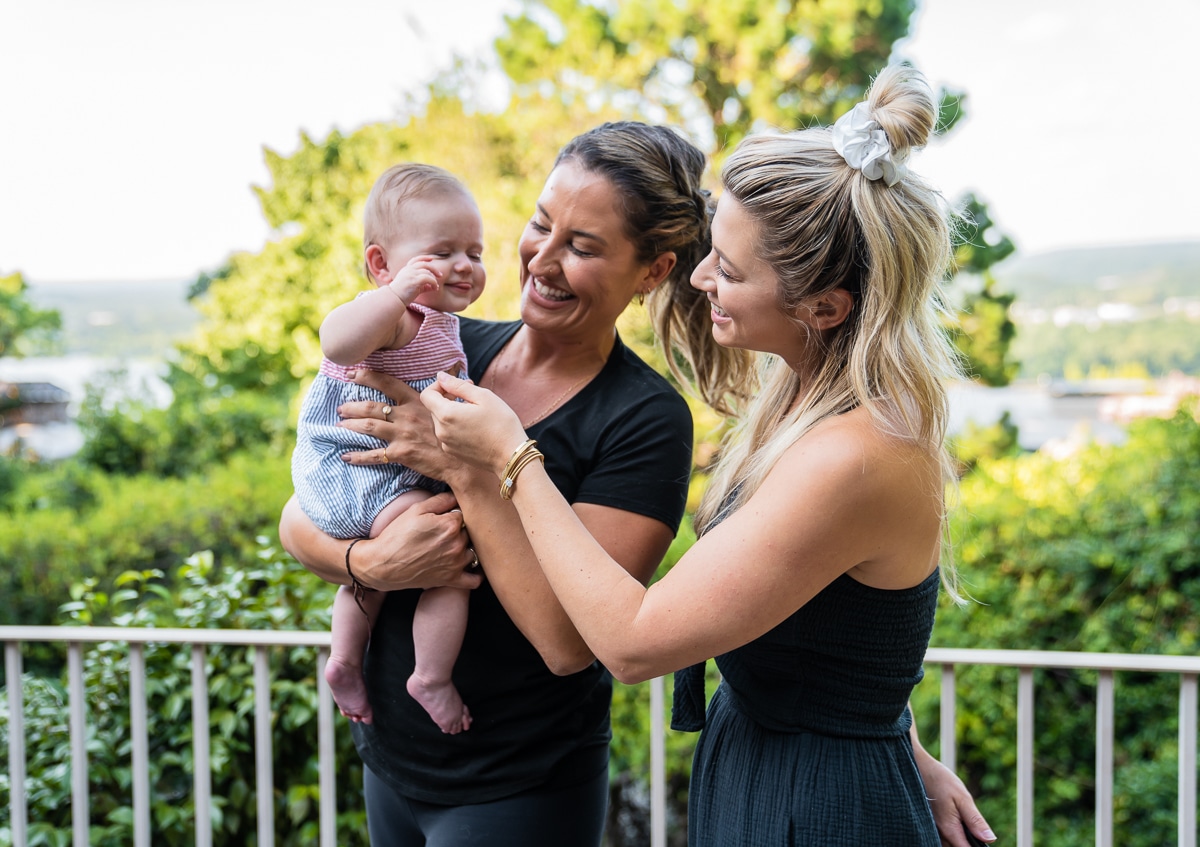
Sleep training completely changed our lives. All three of us are getting loads more sleep which means more productivity, more energy, more development and pure HAPPINESS. I can’t thank Kimberly enough for guiding us through a big learning curve when we needed it the most. She instilled confidence in us, and that’s priceless. Every baby is SO different and there are 100 million things that could happen that I didn’t get to cover here like what happens if your baby wakes up in the middle of the night and won’t go back to sleep? Or what do I do if my baby is waking up insanely early at 5am? How do I get my baby to like bedtime? How do I handle the 4 month sleep regression? It can be so overwhelming, I know – I’ve been there! Let me know if you have any questions below…but honestly I’m no expert. My advice is to CALL KIMBERLY! She’ll change your life. No, it’s not exactly inexpensive to have someone come into your home like this, but what if I told you that you’d get your sleep and nights back after just TWO DAYS? In that timeframe, you’ll be sleeping through the night again. That right there was worth it to me because the next day I was more productive with work and a better mom.
Sweet dreams, y’all!



Do you give a bottle before bath time? Curious when the last feeding for the night is? My sweet girl just always falls asleep feeding and I dont want to wake her to put her in the crib
Lesley-I’m so happy you had such a positive sleep training experience! The sleep deprivation is so real and so challenging. My son was born just a few days after Nora (also at 37 weeks) and also has laryngomalacia. Is that something you discussed with your pediatrician or ENT prior to starting sleep training? I’ve been so hesitant to start because our ENT has told us not to let him cry for too long, but we’re so ready to work towards independent sleep! I’m also curious about the lovey – I feel like my son would love one but I’ve heard that it’s best to wait until 1 to introduce into the sleep space. Did your sleep consultant have advice about that?? Thank you!!